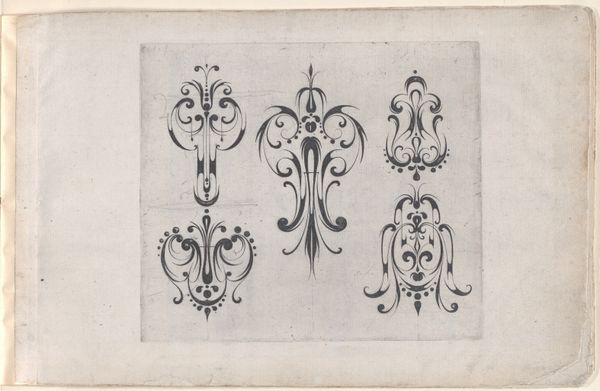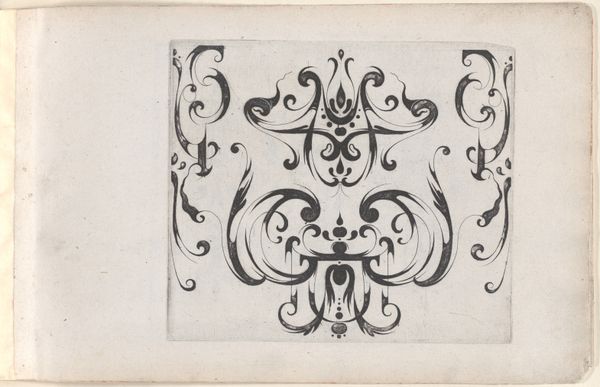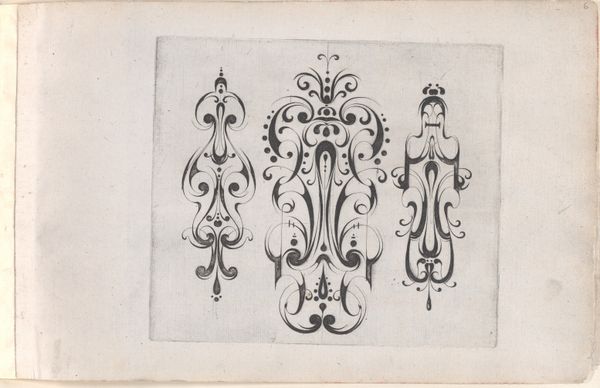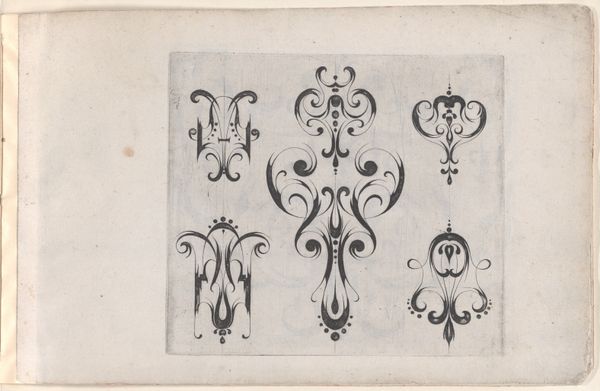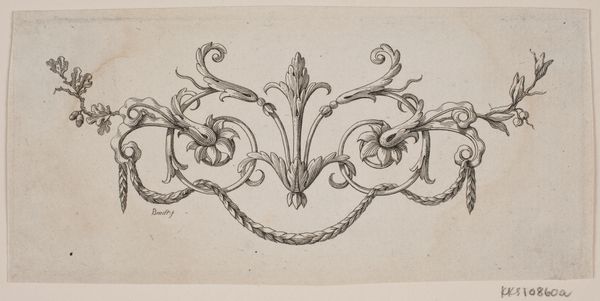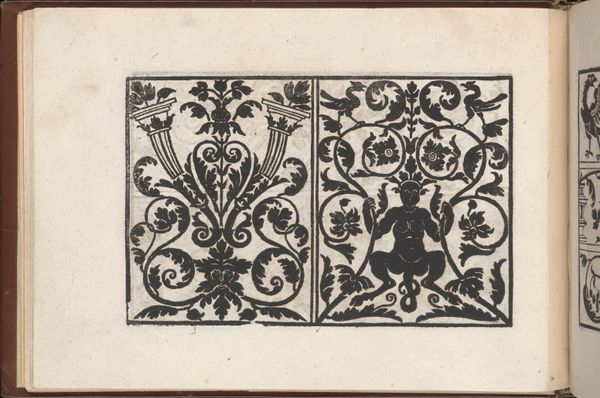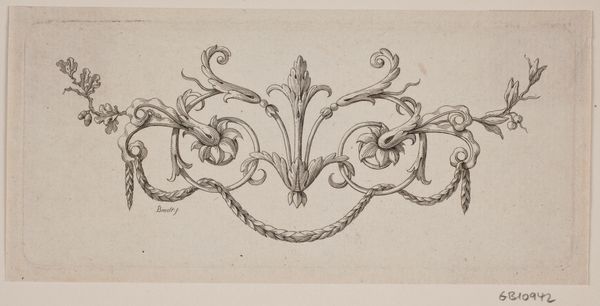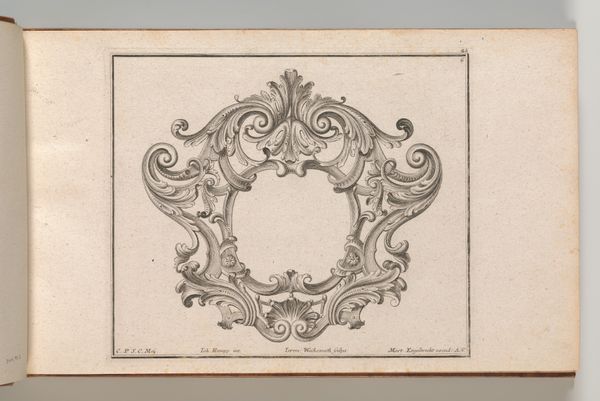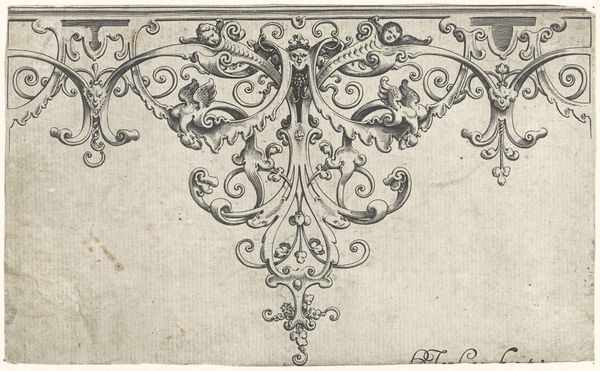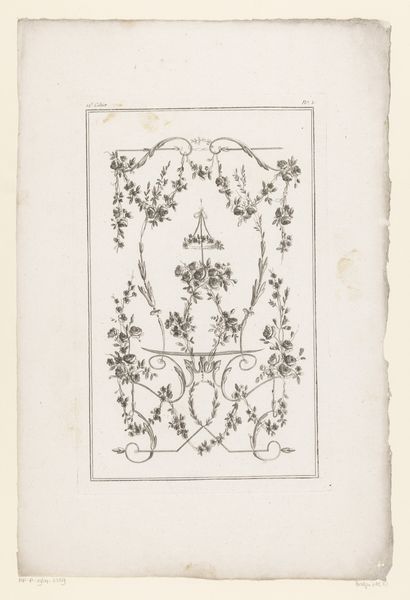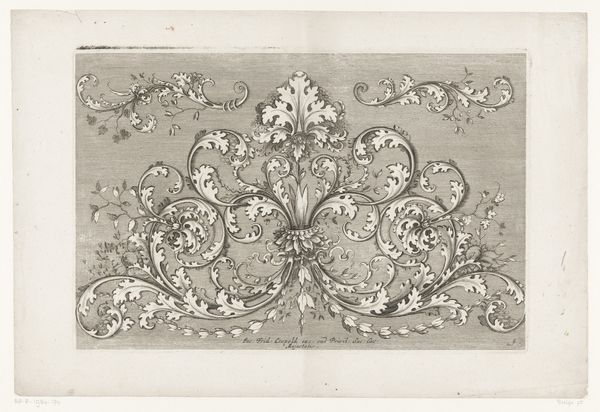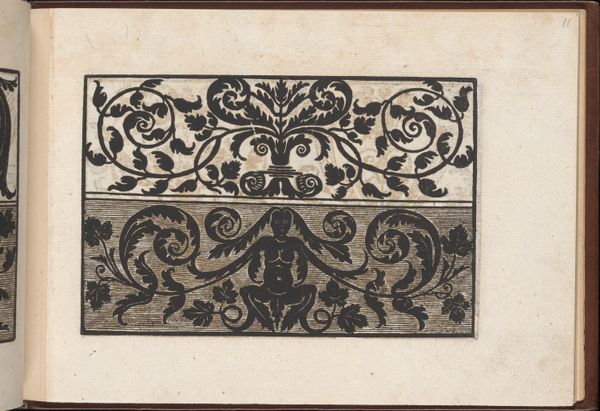
Plate from the Print Series 'Grateske voer golt smeden Schrijnwerkers Ende andere des nodich hebbende' 1605 - 1615
0:00
0:00
drawing, print, etching
#
drawing
#
baroque
#
ink paper printed
# print
#
etching
#
geometric
#
line
#
decorative-art
Dimensions: 7 3/4 × 11 7/16 × 1/8 in. (19.7 × 29 × 0.3 cm) Plate: 5 3/8 × 6 1/8 in. (13.6 × 15.6 cm)
Copyright: Public Domain
Editor: This is a plate from the Print Series 'Grateske voer golt smeden Schrijnwerkers Ende andere des nodich hebbende' made sometime between 1605 and 1615 by Meinert Gelijs. It's an etching, so ink on paper, and shows these intricate, symmetrical designs. It's interesting how decorative arts are presented as both art and instructions... What can we learn by examining the material processes present here? Curator: Exactly. Notice how the etching technique itself dictates the forms; the fine lines are a direct result of the tools used and the pressure applied. This isn't just decoration; it's information. Considering its purpose—patterns for metal and woodwork—it embodies a complex relationship between the artist, the artisan, and the consumer. Editor: So, you are saying that this piece challenges traditional art hierarchy? By offering accessible design, Gelijs questions the privileged role of art? Curator: Precisely. The etching process enabled mass production, circulating designs beyond elite circles. This print acted as a commodity itself, impacting labor practices and material culture in a tangible way. It democratizes design while shaping consumption patterns. It invites makers of the time into broader cultural networks by facilitating exchange through object making and ownership. How does the print surface enhance or alter these intended functions of communication and creation? Editor: It is all the more clear that it becomes part of a cultural ecosystem... it informs production while opening creative pathways! I hadn't considered how profoundly material context informs our understanding of art beyond the aesthetic appeal. Curator: Indeed, recognizing materiality invites a more inclusive, historically informed engagement with objects.
Comments
No comments
Be the first to comment and join the conversation on the ultimate creative platform.
